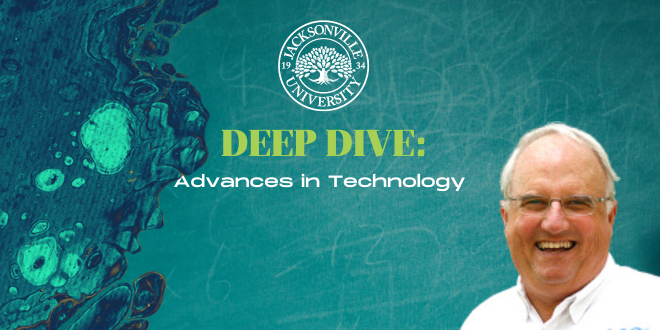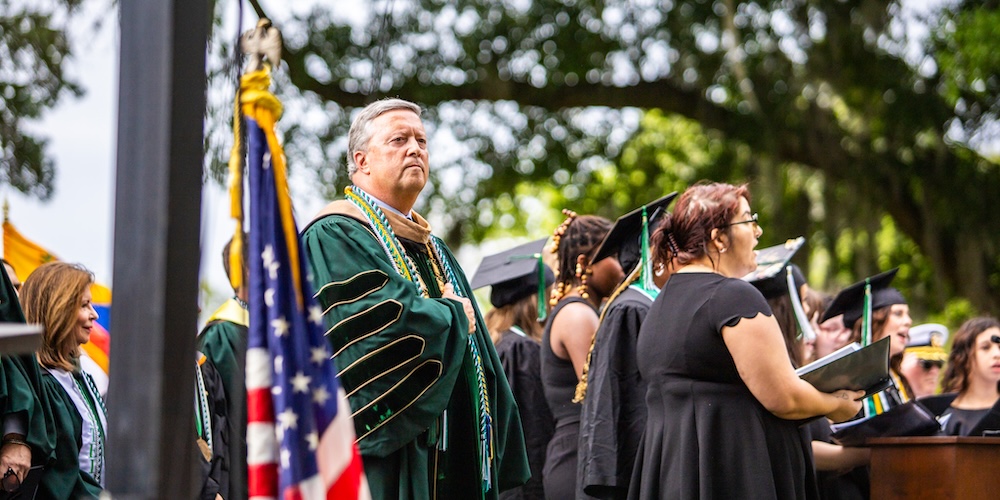Last month, the Southeastern Estuarine Research Society met in Savannah to celebrate 50 years as an organization.
This is an organization that I have been a member of for nearly its entire 50 years. It is a nonprofit educational organization that allows and promotes informal exchange of interdisciplinary information related to estuaries of the Southeastern United States and specifically encourages participation of student colleagues.
It is an affiliate society of the Coastal and Estuarine Research Federation, which, in turn, has a network of other regional associations. With the estuarine aspects of the St. Johns River, the Southeastern Estuarine Research Society has been an important organization to keep us informed about ongoing research.
It is the student aspect of the society that I have always enjoyed. I have taken literally dozens of students to the meetings over the years, and often they are giving their first scientific paper to someone other than their classmates. This year was no exception. In addition to the students, this year two former students, now professional estuarine scientists in their own right, also attended.
As part of the program, I was asked to give a talk about the past 50 years of the organization and also to reflect on the past 50 years of marine science. For good or bad, I have reached that point in my career that I can look back and see the significant changes that have occurred.
The Southeastern Estuarine Research Society was started in 1974 with a meeting in Savannah. I had enrolled in my doctoral program at the University of South Carolina in 1972, having completed my master's degree at the University of Virginia earlier that year. And while I did not attend the first meeting, I did attend the second one in 1975. So hence the nearly 50 years of my affiliation.
As I reflected on the past five decades, the greatest change has been in the area of technology. I actually started my talk with a reference to 1947 when the first transistors were invented, and then to 1958 when the first computer chip appeared. It wasn’t until the 1970s that large mainframe computers became available. And we entered data using punch cards. Yes, those same punch cards of the 2000 Bush-Gore election fame. I happened to have my own hanging chad story. But that is for another column.
In the mid-'70s, we were doing what was termed “ground-truthing,” or taking concurrent measurements of temperature, dissolved oxygen, salinity and chlorophyll-a, while NASA flew planes overhead equipped with remote sensors to detect the same data. That would lead us to where we are today with satellites gathering the same information.
Even the way we gather data for such variables as dissolved oxygen and salinity has changed dramatically. Today, we use a multi-function handheld instrument that can measure dissolved oxygen, pH, salinity, and Chlorophyll-a, along with an array of other parameters in just seconds. In the '70s, we used chemical titration with complex solutions that had to be prepared to exact standards. It took hours to get just a few data points. Today, we can produce volumes of data in seconds. If it were not for computers, we would not be able to process or analyze the vast amount of information we gather.
I had already arrived at Jacksonville University in 1976 before the first desktop computers were introduced. Does anyone remember the Apple IIe, or Radio Shack’s Commodore or the Tandy? We were so happy when we got the Apple IIe in biology. Little did we know what was ahead for us.
Cellphones appeared in 1983, first as a car phone, then in bulky cases you carried with a strap on your shoulder. Today, you have more computing capacity in your hand-held mobile phone than I did on the mainframe computer at USC when I did my doctoral research.
As I have told my students many times, and repeated the message at last month's meeting, the future is bright and exciting. We can only imagine, and certainly not know, what the future holds. Artificial intelligence is the tip of the iceberg of the future. Hang on, the outlook is promising. Don’t let anyone tell you otherwise!
Glad you asked River Life
Why does northeast Florida have such rapidly changing weather patterns?
With apologies to my meteorologist friends, northeast Florida is at a unique latitude
climate-wise and heavily influenced by water. We are located between the “trade winds”
and the “westerlies.” The westerlies are the dominant winds in the winter as cold
fronts make it into the area from the north or northwest, whereas the” trade winds”
are more dominant in the summer, making Florida subtropical. Trade winds are why hurricanes
come in from the east or southeast. Our prevailing wind pattern in the summer is east
to southeast. We don’t typically get fronts in the summer, so the daily sea breeze
drives our storm pattern. In the spring, the changing seasons makes the variation
more pronounced with potentially rapid daily shifts in temperature as the relative
position of the sun to the earth changes. It’s reversed in the fall with nor’easters
blowing in with wind and rain.



